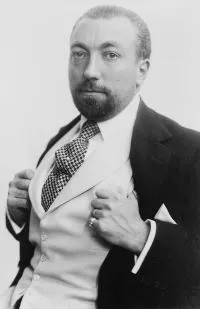
Introduction
When you think of trailblazers in fashion history, the name Paul Poiret comes up as one of the most influential. In an era where corsets dominated women’s fashion, Poiret dared to dream beyond restrictive clothing. His revolutionary designs not only transformed women’s wardrobes but also shaped the very future of fashion. Known for his bold silhouettes, vivid colors, and incorporation of exotic elements, Poiret was more than just a designer—he was an artist, an innovator, and one of the earliest fashion entrepreneurs. But how did Paul Poiret carve his niche in the ever-evolving fashion industry? Let’s explore.
Table of Contents
Early Life and Career Beginnings
Born in Paris in 1879, Poiret grew up in a modest household, his father a cloth merchant, which exposed him early to fabrics and garments. His humble beginnings didn’t keep him from dreaming big. From a young age, he was fascinated by fashion and the way it reflected society’s values and aesthetics. He started his career as an apprentice at a well-known fashion house, where he learned the ropes of garment construction and design.
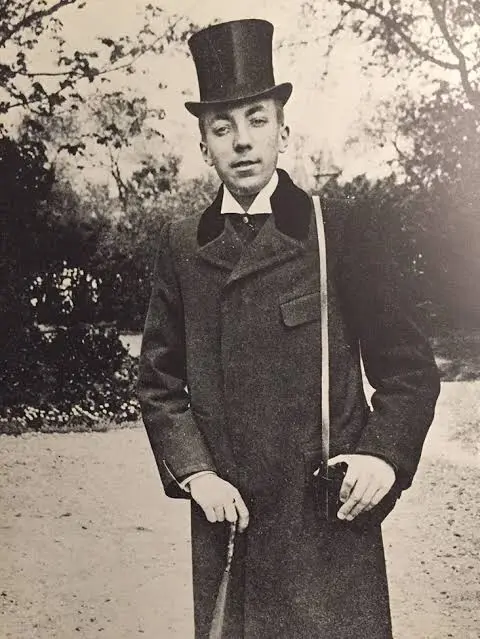
photo/thethread
Influences on Poiret’s Design Philosophy
Poiret wasn’t just influenced by the technical aspects of design; he was also heavily influenced by the art and culture around him. The rise of Impressionism and Art Nouveau in France inspired him to think beyond the conventional lines of fashion. He admired the work of artists like Gustav Klimt and Henri Matisse, whose bold use of color and form would later be reflected in his designs. Additionally, Poiret was drawn to theater and costume design, which led him to think of clothing not just as functional items but as expressions of personality and art.
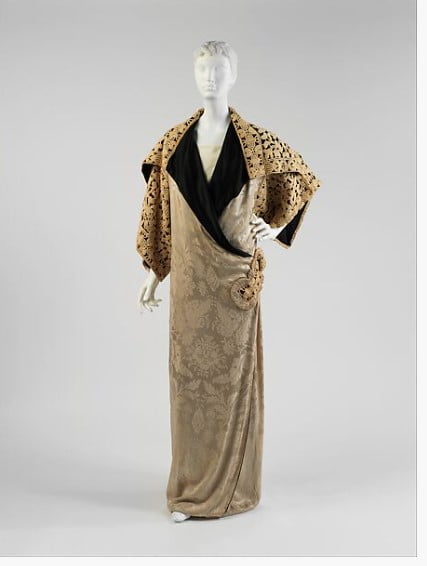
photo/metmuseum
Breaking Away from the Corset
At the turn of the 20th century, the corset was a staple in women’s fashion. It symbolized structure, formality, and a tightly controlled silhouette. However, Poiret saw corsets as symbols of restriction, both physically and creatively. He made the radical decision to design garments that allowed freedom of movement—a daring move that changed the trajectory of women’s fashion forever.
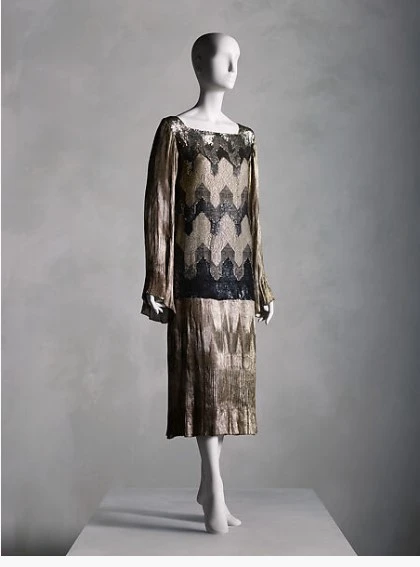
photo/metmuseum
Introduction of Loose Fitting and Draping Styles
In place of the corset, Poiret introduced loose-fitting, free-flowing garments that emphasized comfort without sacrificing elegance. His designs, like the “lampshade” tunic and harem pants, allowed women to experience an unprecedented level of comfort while remaining fashionable. These garments draped the body in a way that was sensual yet freeing. The shift dress, for example, became an iconic silhouette, offering a relaxed fit while maintaining an air of sophistication. Poiret believed that clothing should complement the body’s natural shape, not force it into unnatural forms.
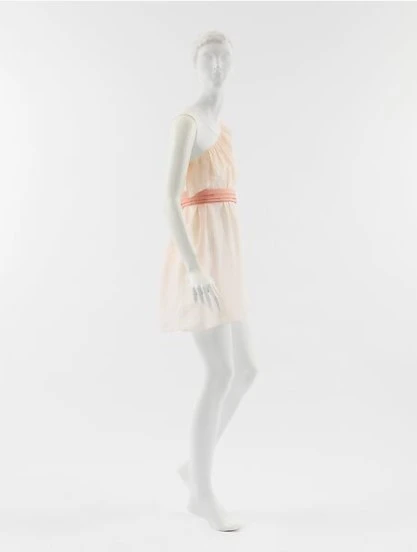
photo/metmuseum
The Role of Exoticism in Poiret’s Designs
Poiret’s designs were heavily influenced by Orientalism, a growing fascination in Europe with the art, culture, and aesthetics of the East. In the early 20th century, countries like Japan, China, and India were seen as exotic lands, full of mystery and allure. This fascination with the “Orient” was a major influence in both art and fashion, and Poiret was one of its earliest proponents.
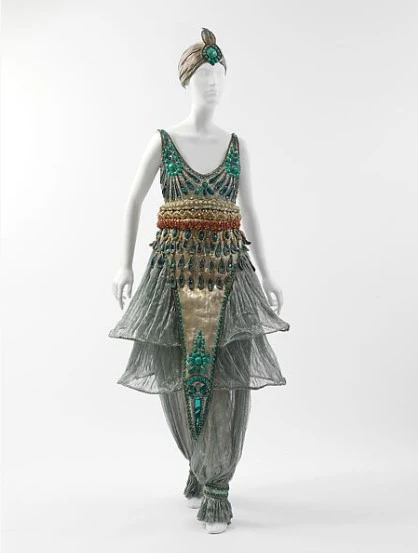
photo/metmuseum
Inspiration from the East: The Influence of Orientalism
Poiret’s love for Eastern aesthetics was clear in his use of vivid colors, ornate patterns, and luxurious fabrics like silk and brocade. His collections often drew inspiration from Japanese kimonos, Turkish caftans, and Middle Eastern drapery. Poiret was also fascinated by the theatrical performances of the Ballets Russes, which were known for their elaborate, Eastern-inspired costumes. This influence can be seen in his extravagant designs that blended Western and Eastern elements, creating a truly unique aesthetic.
The Use of Bold Colors and Rich Textures
Poiret was a master of color and texture, unafraid to use rich, vibrant hues that were not commonly seen in Western fashion at the time. He loved deep purples, emerald greens, ruby reds, and golden yellows, often pairing these bold colors with equally sumptuous materials like velvet, silk, and satin. His love for textures extended beyond fabrics, as he also incorporated embroidery and beadwork into his designs. These rich textures and bold colors created an opulent, almost otherworldly look that set him apart from his contemporaries.
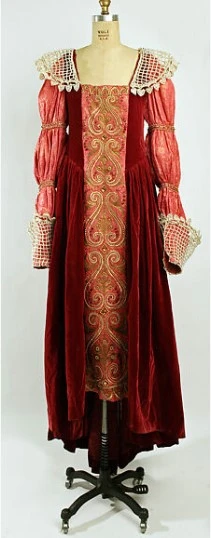
photo/metmuseum
A Trendsetter in Fashion Marketing
Paul Poiret was not only a designer but also a pioneering marketer. He understood that fashion wasn’t just about creating beautiful clothes—it was about creating an entire lifestyle. Poiret was one of the first designers to realize the potential of branding and marketing in the fashion world.
Poiret’s Fashion Events and Extravagant Parties
Poiret didn’t just sell clothes; he sold an experience. He became famous for hosting lavish, over-the-top fashion events that were part runway show, part theatrical production. These events drew in high society, celebrities, and even royalty, making Poiret the talk of the town. One of his most famous events was the “Thousand and Second Night” party, held in 1911. Inspired by Arabian Nights, the party was an opulent affair with guests dressed in elaborate costumes, flowing robes, and exotic headpieces. Poiret’s use of such events helped solidify his status as a designer who didn’t just follow trends—he set them.
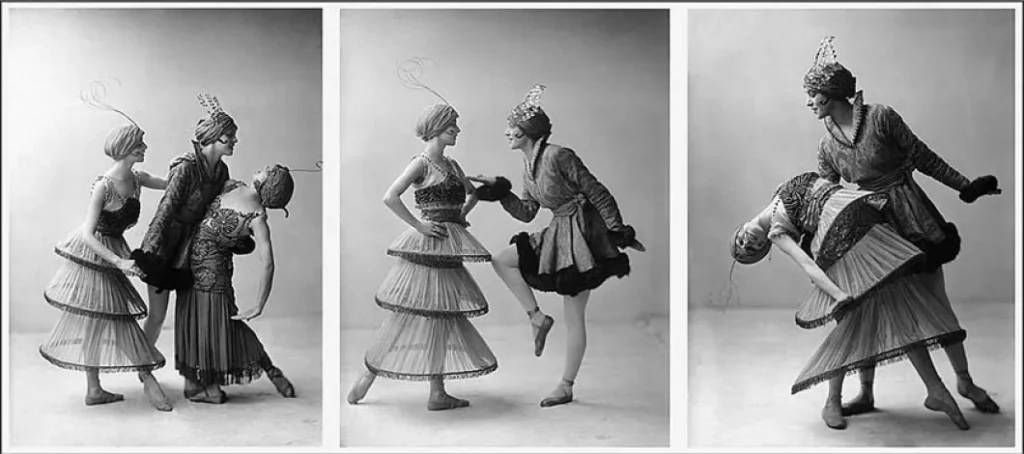
photo/aimeecrocker
Also Read-Madeleine Vionnet: The Architect of Modern Fashion
The Perfume Pioneer
Another groundbreaking move by Paul Poiret was his entry into the world of perfumes. In 1911, he launched a perfume line, becoming one of the first designers to do so. He understood that fashion wasn’t just about clothing; it was about a complete experience, and fragrance played a crucial role in that.
His first perfume, “Parfums de Rosine,” was named after his daughter, and it was a hit. This move paved the way for modern fashion houses like Chanel and Dior, which followed in his footsteps by launching their own perfume lines. Today, the marriage of fashion and fragrance is a staple of luxury brands, and Poiret was a pioneer in this regard.
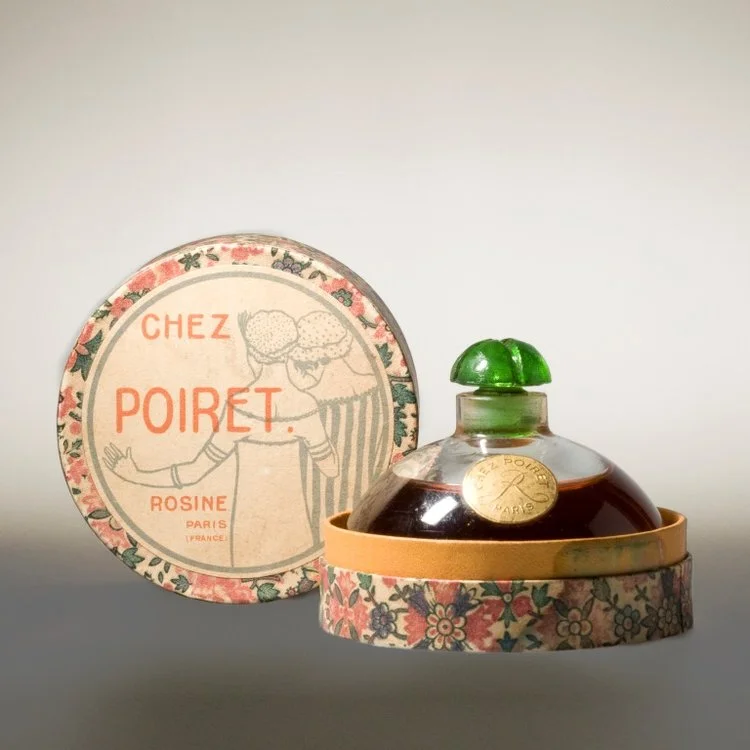
photo/couturenotebook
Master of Publicity: A Trendsetter in Fashion Marketing
Paul Poiret was not only a brilliant designer but also a master of self-promotion. He understood the power of publicity and often used extravagant events and shows to draw attention to his work. His fashion shows were among the first of their kind, and he transformed these events into theatrical experiences.
His parties were legendary, with the “Thousand and Second Night” being one of the most famous. Guests dressed in elaborate, exotic costumes, creating a fantasy world that aligned perfectly with Poiret’s aesthetic. These events weren’t just about showcasing fashion; they were about creating an entire lifestyle around the brand.
Poiret’s flair for publicity helped cement his status as a fashion icon, and his methods of promotion are still emulated by designers today.
Challenges and Decline
Despite his success in the early 1900s, Paul Poiret’s reign in the fashion world was relatively short-lived. The onset of World War I in 1914 caused significant disruptions in the fashion industry, and Poiret’s business was not immune to these changes. His opulent designs fell out of favor as women began to prefer more practical, simpler clothing.
Additionally, after the war, the rise of designers like Coco Chanel, who introduced more minimalist, functional designs, eclipsed Poiret’s lavish, extravagant style. Chanel’s simple, elegant approach to fashion represented the modern woman’s new sensibilities, leaving Poiret’s theatrical creations behind.
In 1929, Poiret’s fashion house closed, and he spent the remaining years of his life in relative obscurity, passing away in poverty in 1944. Despite this decline, his influence on fashion is undeniable.
The Legacy of Paul Poiret
Though Paul Poiret’s fashion house may have faded, his impact on the world of fashion remains. He was a visionary who challenged the status quo and opened up new possibilities for what fashion could be.
His rejection of corsets helped liberate women from restrictive clothing, and his bold use of color and exotic influences paved the way for more daring, expressive designs. He was also one of the first designers to recognize the importance of branding beyond clothing, with his foray into the world of fragrance.
Poiret’s influence can still be seen today in the way modern designers blend fashion with lifestyle. His theatrical fashion shows and bold marketing techniques set the stage for how fashion is presented in contemporary times. Designers like Jean-Paul Gaultier and John Galliano have cited Poiret as an influence, continuing his legacy of pushing boundaries and challenging conventions.
Conclusion
Paul Poiret was a true innovator who reshaped the fashion world in ways that are still felt today. His bold rejection of corsets, his embrace of exotic influences, and his understanding of fashion as a comprehensive lifestyle made him one of the most influential designers of the 20th century.
Though his star may have faded in the latter part of his career, Poiret’s contributions to the fashion industry continue to inspire designers and fashion lovers alike. His willingness to take risks and break away from tradition is a reminder that fashion is not just about clothing but about self-expression, freedom, and creativity.
FAQs
1. Who was Paul Poiret? Paul Poiret was a French fashion designer, celebrated for liberating women from the corset and introducing exotic, free-flowing designs in the early 20th century.
2. What made Paul Poiret’s designs revolutionary?
Paul Poiret’s designs were revolutionary because he rejected the corset and introduced looser, more comfortable clothing for women. He also embraced bold colors, exotic influences, and introduced fashion perfumes.
3. How did Paul Poiret influence modern fashion houses?
Poiret was one of the first designers to launch a perfume line, which set a precedent for modern fashion houses like Chanel and Dior to include fragrances as part of their brand.
4. Why did Paul Poiret’s fashion house close?
Poiret’s fashion house closed in 1929 due to a combination of World War I’s impact on the fashion industry and changing tastes that favored simpler, more practical designs, particularly those by Coco Chanel.
5. What was Paul Poiret’s signature style?
Poiret’s signature style was opulent, exotic, and theatrical. He was known for his use of vibrant colors, draped fabrics, and non-traditional silhouettes that were free from the restrictive corset.
6. How is Paul Poiret remembered today?
Today, Paul Poiret is remembered as a trailblazer who liberated women from corsets and introduced bold, innovative designs that helped shape modern fashion. His work continues to influence designers and fashion houses around the world.
7. Why did Paul Poiret reject the corset?
Poiret believed that fashion should allow freedom of movement and expression, rejecting the restrictive corset in favor of more natural, flowing silhouettes.
One thought on “Paul Poiret: The Revolutionary Designer Who Shaped Modern Fashion”